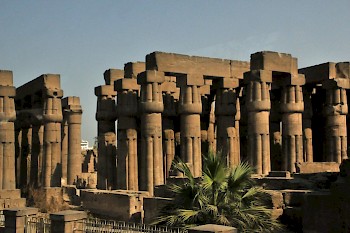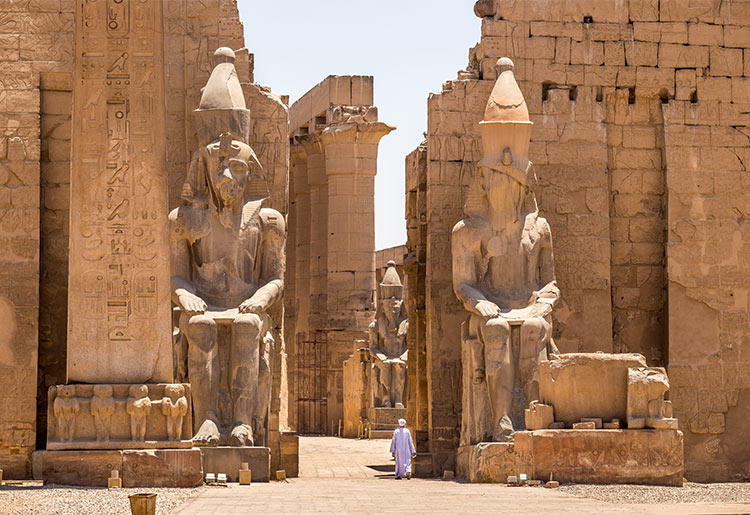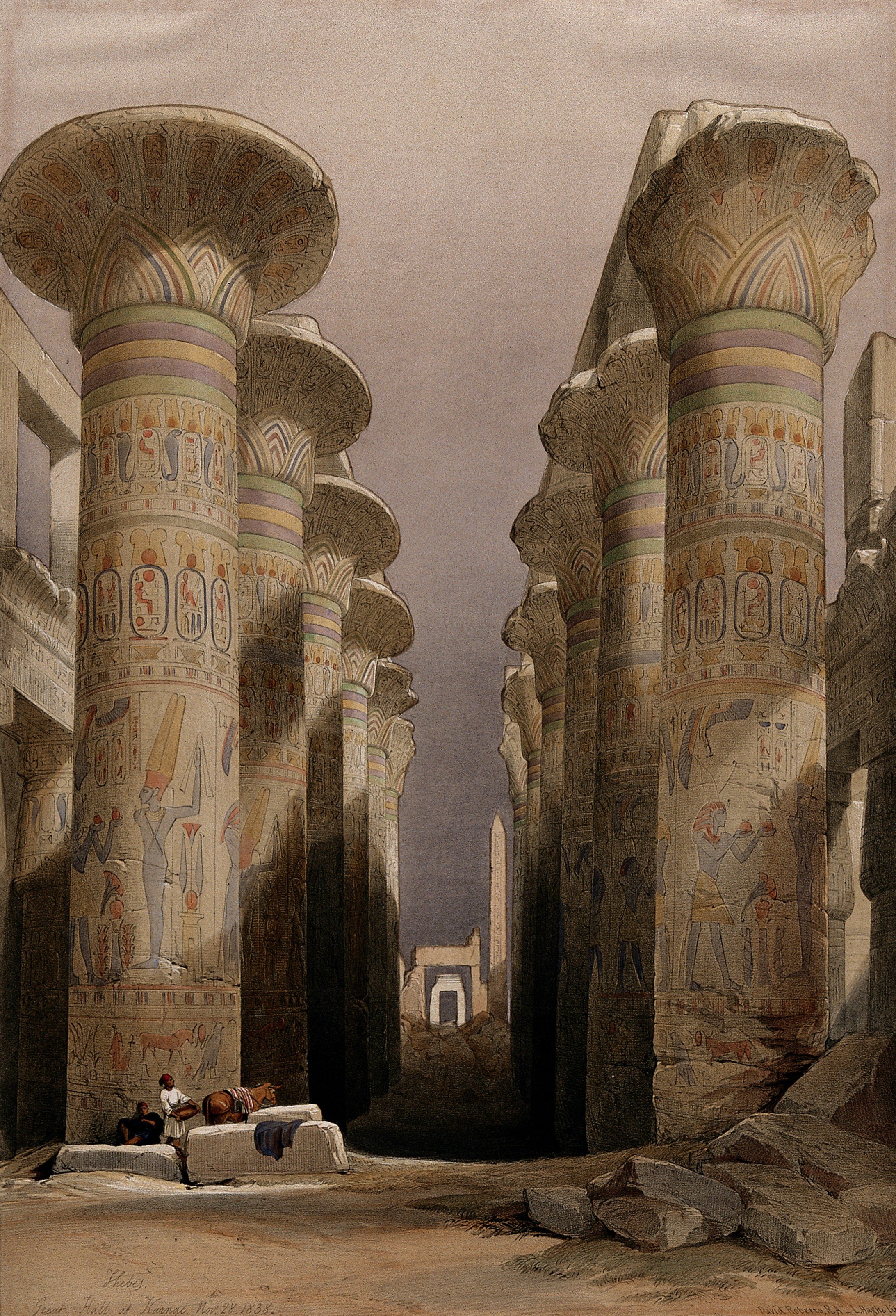Thebes was an ancient city located in Upper Egypt, along the Nile River. It was one of the most important cultural and religious centers of ancient Egypt, and it was the capital of the New Kingdom (1550–1069 BCE) during its heyday.
The history of Thebes dates back to the Old Kingdom (c. 2686–2181 BCE), when it was a small provincial town. However, it was during the Middle Kingdom (c. 2055–1650 BCE) that Thebes began to emerge as an important city. The pharaohs of this period established a number of important temples and religious sites in the city, including the Temple of Karnak and the Temple of Luxor.
The New Kingdom saw Thebes rise to even greater prominence, as the city became the center of the powerful Eighteenth Dynasty. During this period, the pharaohs of Thebes extended their control over much of Egypt and launched ambitious building projects throughout the city. The most notable of these was the construction of the Valley of the Kings, which served as the royal burial ground for the pharaohs of the New Kingdom.
Thebes also played a central role in the development of Egyptian religion and culture. The city was home to many of Egypt's most important temples and shrines, including the Temple of Amun at Karnak, which was one of the largest and most impressive temples in the world. The priests and other religious officials of Thebes wielded enormous power and influence, and they played an important role in shaping the religious and cultural practices of the entire country.The decline of Thebes began in the Third Intermediate Period (c. 1069–664 BCE), when the city was sacked by invading armies and fell into decline. Despite this, Thebes remained an important center of religious and cultural activity throughout the remainder of the ancient period, and it continued to play a central role in the history of Egypt.Today, the ruins of Thebes are an important archaeological site and a major tourist destination. Visitors can explore the impressive temples and tombs of the city, including the Temple of Karnak, the Temple of Luxor, and the Valley of the Kings. These ruins provide a glimpse into the rich history and culture of ancient Egypt, and they serve as a testament to the enduring power and influence of this great civilization.
Thebes was not only a center of religion and culture, but it was also an important political and economic center. The city was strategically located along the Nile River, which made it a major hub for trade and commerce. It was also the site of important administrative centers and government buildings, including the palace of the pharaohs.The city was particularly renowned for its artisans and craftsmen, who produced a wide range of goods, including fine jewelry, pottery, and textiles. The craftsmen of Thebes were particularly skilled in producing elaborate works of art and architecture, which were often commissioned by the pharaohs and other members of the royal court.One of the most impressive examples of the city's art and architecture is the Temple of Karnak, which was constructed over a period of several hundred years. This massive temple complex was dedicated to the god Amun and served as the religious and administrative center of the New Kingdom. It features a series of grand halls, columns, and obelisks, which are adorned with intricate carvings and hieroglyphs.Another notable feature of Thebes is the Valley of the Kings, which is located on the west bank of the Nile River. This valley served as the burial ground for many of the pharaohs of the New Kingdom, including Tutankhamun, Ramses II, and Seti I. The tombs in the Valley of the Kings are renowned for their elaborate decoration and impressive architectural features.Despite its decline, Thebes remained an important center of religious and cultural activity throughout the remainder of the ancient period. The city was the site of several important battles during the Greek and Roman periods, and it continued to play an important role in the history of Egypt.
Today, the ruins of Thebes are a UNESCO World Heritage Site, and they continue to attract thousands of visitors each year. The city's impressive temples, tombs, and other archaeological sites provide a unique glimpse into the rich history and culture of ancient Egypt, and they serve as a testament to the enduring legacy of this great civilization.The city of Thebes was not without its share of political turmoil and conflict throughout its history. The city was frequently invaded and occupied by foreign powers, including the Hyksos in the Second Intermediate Period (c. 1650–1550 BCE) and the Assyrians in the 7th century BCE.Perhaps the most famous conflict involving Thebes was the war between the pharaohs of the New Kingdom and the Hyksos, who had invaded and occupied much of Egypt in the Second Intermediate Period. After several decades of struggle, the pharaoh Ahmose I succeeded in driving the Hyksos out of Egypt and restoring Thebes to its former glory.
Thebes also played an important role in the religious and cultural struggles that characterized the Late Period (c. 664–332 BCE) of Egyptian history. During this period, the country was ruled by a series of foreign powers, including the Persians, Greeks, and Romans. The priests and religious officials of Thebes were particularly resistant to the influence of these foreign powers, and they sought to preserve the traditional religious practices and beliefs of ancient Egypt.One of the most notable examples of this resistance was the famous rebellion led by the priest of Amun, known as the "Great Revolt." In 206 BCE, the priest led a rebellion against the Ptolemaic rulers of Egypt, who had sought to limit the power and influence of the priesthood in Thebes. The revolt was ultimately unsuccessful, but it demonstrated the enduring power and influence of the city's religious leaders.The history of Thebes is a complex and fascinating story, which is still being studied and explored by historians and archaeologists today. The city's impressive ruins and artifacts continue to shed new light on the ancient culture and civilization of Egypt, and they serve as a testament to the enduring legacy of this great city.








0 Comments